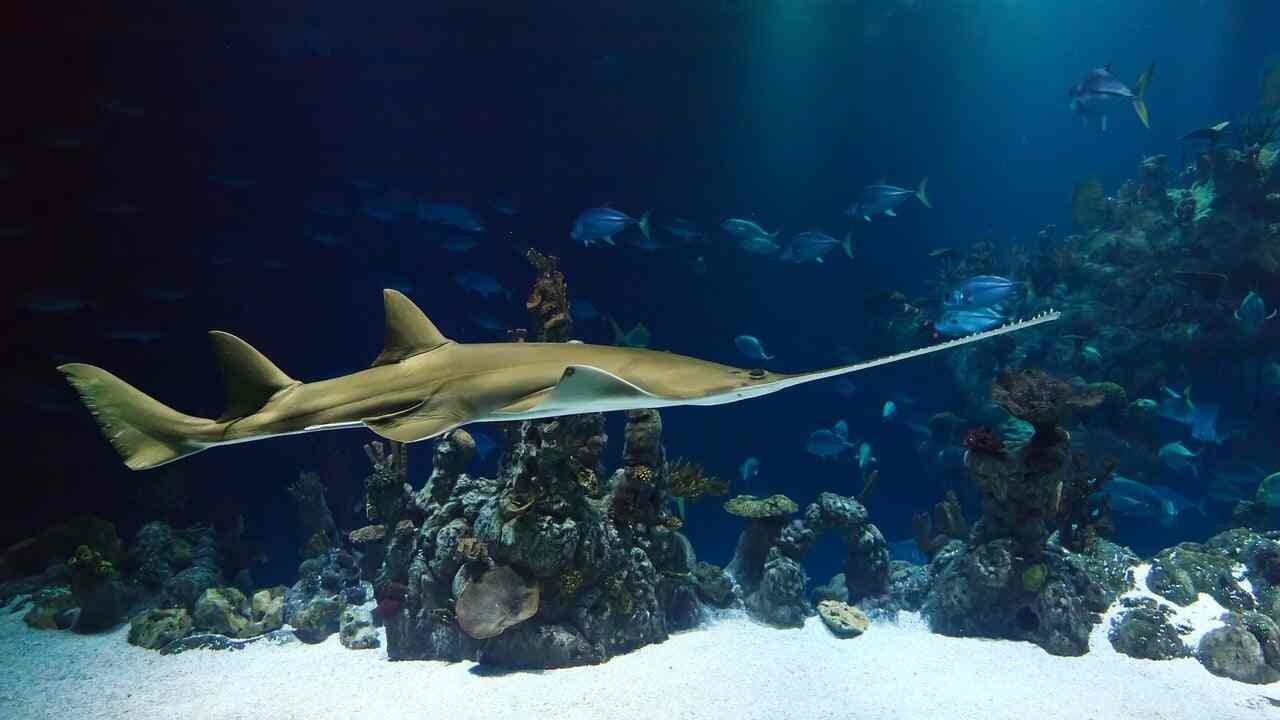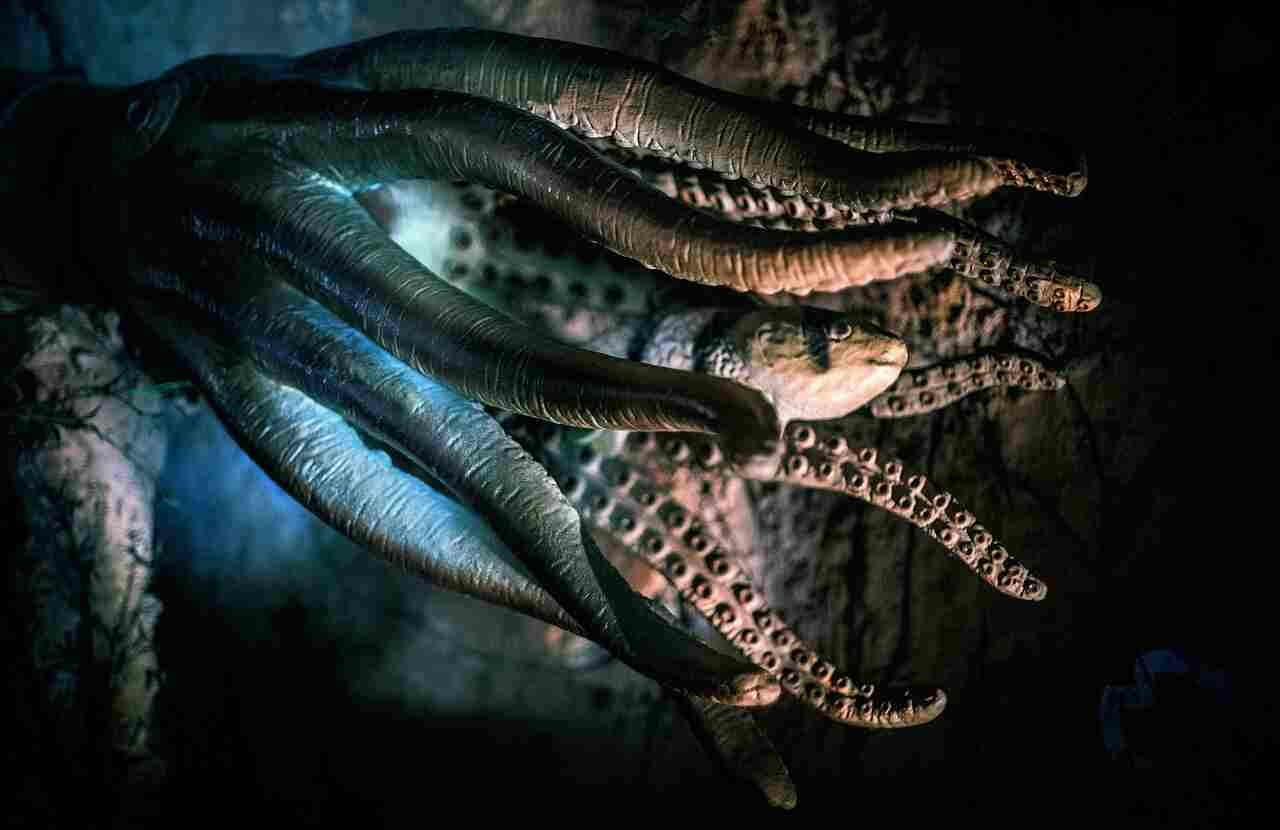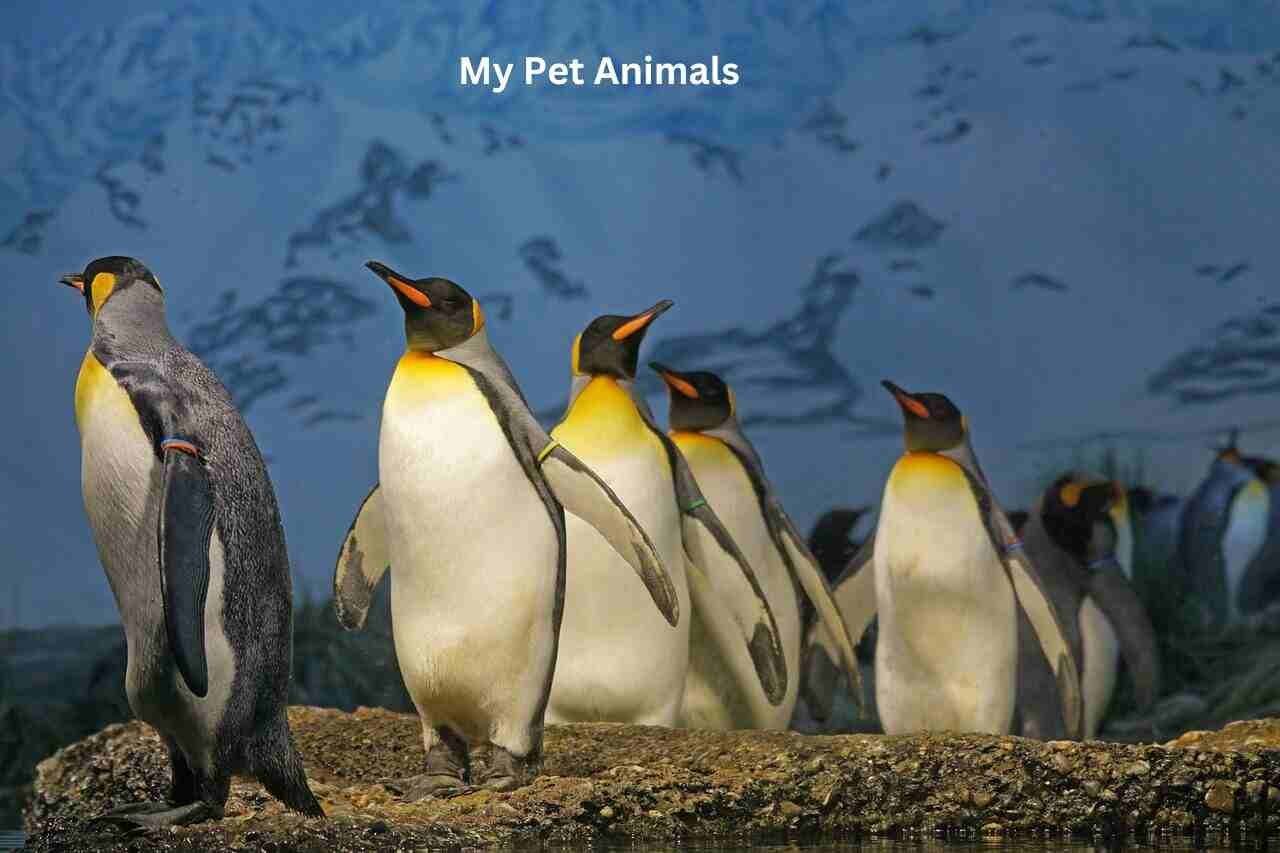The ocean is full of beautiful and interesting animals that live in many different ways. The sea is home to creatures of all shapes, sizes, and colors, from tiny fish to giant whales. Just like wild animal names help us understand and recognize animals on land, learning about sea animals is important too. Whether you are a child, a student, or someone who loves the ocean, knowing the names of these amazing creatures helps us understand their role in the world and how we can protect them.
In this article, you will find popular sea animal names and learn more about the different types of creatures that live in the water. Whether you are curious about fish, sea turtles, dolphins, or even jellyfish, you will find useful and exciting information that will help you appreciate the ocean’s wonders even more. Just like wild animal names, understanding the names of sea animals is a great way to connect with nature and become a better protector of the environment.
Why Are Sea Animals Important?
Sea animals are very important to our planet because they help keep the ocean healthy and balanced. Every sea creature has a special job, and without them, the ocean would not function the way it should.
One of the key roles of sea animals is in the food chain. For example, small fish are eaten by larger fish, and those larger fish may be eaten by bigger animals like dolphins and sharks. These animals help control each other’s numbers, which keeps the ocean ecosystem in balance. If one animal is missing, it can cause problems for other creatures in the ocean.
Sea animals are also fun and interesting to learn about. Did you know that some sea turtles can live for more than 100 years? Or that dolphins are very smart and can talk to each other in their way? There are even sea creatures that can glow in the dark or change colors to hide from predators! These fun facts show how amazing sea animals are.
Why Do Sea Animals Have Names?
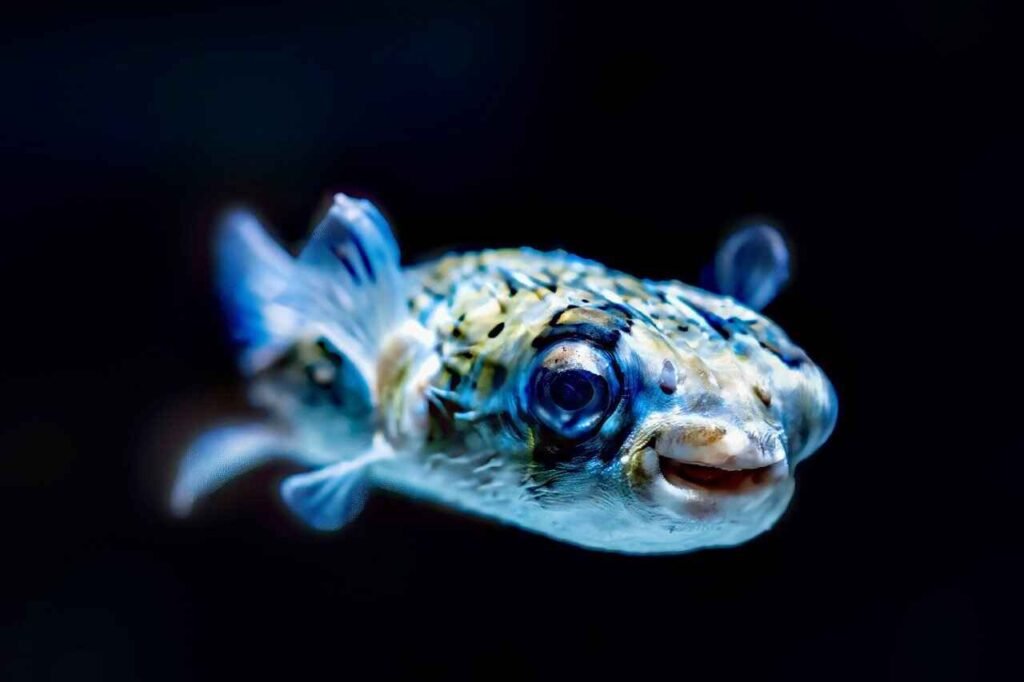
Sea animals have names to help us understand and talk about them. Just like we have names to identify each other, sea animals need names so people can know which animals we are talking about. These names make it easier for scientists, researchers, and people who care about the ocean to share information and study the animals.
Each sea animal has a special name, which helps us learn more about them. The names also tell us where they live, what they look like, or even what they do. For example, the name dolphin tells us that it is a type of sea mammal that lives in the water, while the name whale shark tells us that it is a big fish with a shape similar to a whale.
Having names for sea animals is important because it allows people to work together to protect the animals and their habitats. By understanding the names and roles of these animals, we can help take better care of the oceans and ensure that these animals continue to live and thrive for future generations.
list of 50 popular sea animal names
| Sea Animal Names | Scientific Name | Lifespan |
|---|---|---|
| Angelfish | Pomacanthidae | 10-15 years |
| Anglerfish | Lasiognathus | 5-6 years |
| Barracuda | Sphyraena barracuda | 10 years |
| Bat Ray | Myliobatis californica | 15-20 years |
| Batfish | Ogcocephalidae | 7-8 years |
| Blowfish | Diodontidae | 10 years |
| Blue Whale | Balaenoptera musculus | 70-90 years |
| Barracuda | Sphyraena barracuda | 10 years |
| Caribbean Reef Shark | Carcharhinus perezi | 25-30 years |
| Clownfish | Amphiprioninae | 6-10 years |
| Coral | Anthozoa | Up to 100 years |
| Crocodile Fish | Cymbacephalus beauforti | 6-8 years |
| Cuttlefish | Sepia officinalis | 2-3 years |
| Dolphin | Delphinus delphis | 20-60 years |
| Eel | Anguilliformes | 15-20 years |
| Flounder | Pleuronectidae | 5-10 years |
| Great White Shark | Carcharodon carcharias | 70 years |
| Hermit Crab | Paguroidea | 10-20 years |
| Humpback Whale | Megaptera novaeangliae | 50-60 years |
| Jellyfish | Aurelia aurita | 6-9 months (depends on species) |
| Killer Whale | Orcinus orca | 50-90 years |
| King Crab | Paralithodes camtschaticus | 20 years |
| Leafy Sea Dragon | Phycodurus eques | 3-7 years |
| Lobster | Homarus americanus | 50+ years |
| Manatee | Trichechus manatus | 50-60 years |
| Mantis Shrimp | Stomatopoda | 6 years |
| Mollusk | Mollusca | 1-10 years |
| Moray Eel | Muraenidae | 10-30 years |
| Narwhal | Monodon monoceros | 30-40 years |
| Octopus | Octopus vulgaris | 3-5 years |
| Penguin | Spheniscidae | 15-20 years |
| Porpoise | Phocoenidae | 10-20 years |
| Pufferfish | Tetraodontidae | 10 years |
| Ribbon Eel | Rhinomuraena quaesita | 6 years |
| Ribbon Seal | Histriophoca fasciata | 25 years |
| Seahorse | Hippocampus | 1-5 years |
| Sea Lion | Zalophus californianus | 20-30 years |
| Sea Turtle | Chelonia mydas | 80-100 years |
| Sharks | Chondrichthyes | Varies by species |
| Squid | Teuthida | 1-2 years |
| Starfish | Asteroidea | 35 years |
| Swordfish | Xiphias gladius | 9-12 years |
| Tuna | Thunnus | 15-30 years |
| Triggerfish | Balistidae | 10-15 years |
| Turtle | Testudines | 80 years |
| Whale Shark | Rhincodon typus | 70-100 years |
| White-tip Reef Shark | Triaenodon obesus | 10-15 years |
| Zebra Shark | Stegostoma tigrinum | 25-30 years |
sea Fish names
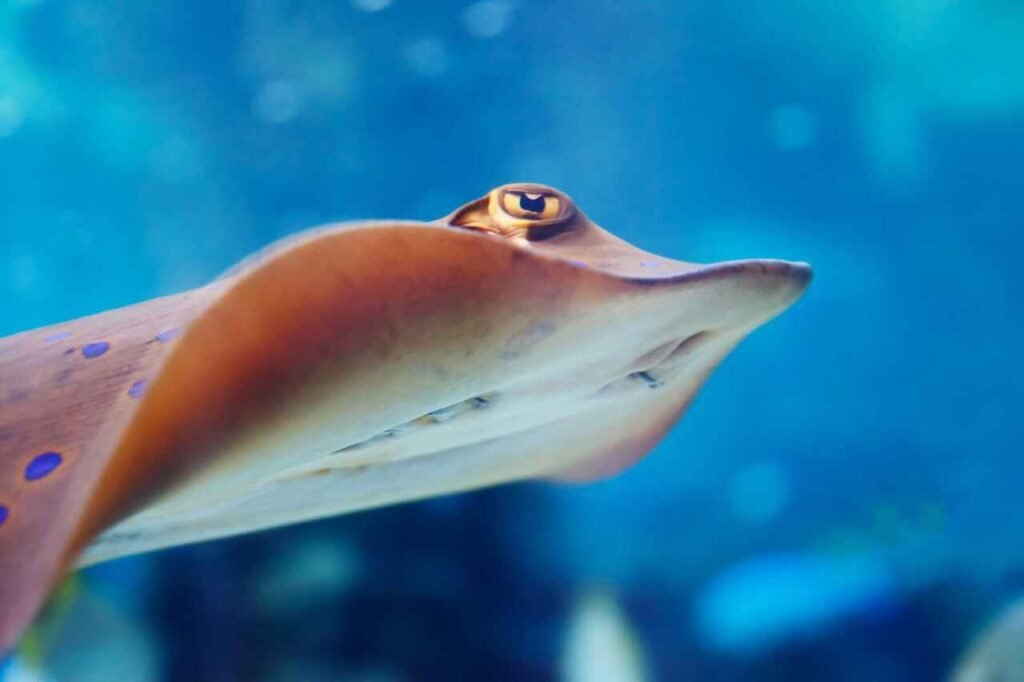
1. Clownfish
Scientific Name: Amphiprioninae
Clownfish are small, colorful fish that live in sea anemones. The anemones offer protection, and the clownfish help by cleaning them.
2. Angelfish
Scientific Name: Pomacanthidae
Angelfish are known for their bright colors and are often found in coral reefs. They are peaceful and are a favorite for aquariums.
3. Tuna Fish
Scientific Name: Thunnus
Tuna are large fish that swim very fast. They are valuable for their meat and are found in warm seas.
4. Salmon Fish
Scientific Name: Salmo salar
Salmon are known for swimming from the ocean to rivers, where they are born. They have pink-colored meat and are very popular to eat.
5. Swordfish
Scientific Name: Xiphias gladius
Swordfish are large fish with a long, sharp bill. They use this bill to catch prey and are known for their speed in the water.
6. Mahi-Mahi
Scientific Name: Coryphaena hippurus
Mahi-mahi, also called “dorado,” is a colorful fish with sweet, mild meat. It is found in tropical waters.
7. Snapper
Scientific Name: Lutjanidae
Snappers are fish with sharp teeth. They are often found in warm seas and are enjoyed for their tasty flesh.
8. Barracuda
Scientific Name: Sphyraena barracuda
Barracudas are fast and powerful fish known for their sharp teeth. They can be dangerous to smaller fish.
9. Flounder
Scientific Name: Pleuronectidae
Flounders are flat fish that live on the ocean floor. They have both eyes on one side of their body, which helps them blend in with the sand.
10. Cod
Scientific Name: Gadus morhua
Cod are large fish found in cold waters. They have mild-tasting meat and are used in many dishes, like fish and chips.
11. Herring
Scientific Name: Clupea harengus
Herring are small fish that travel in schools. They are important for the ocean food chain and are often used for food.
12. Grouper
Scientific Name: Epinephelinae
Groupers are large fish that live in warm waters. They are known for their sweet, meaty taste.
13. Halibut
Scientific Name: Hippoglossus
Halibuts are flat fish that live in cold waters. They are large and have firm, white meat.
14. Wahoo
Scientific Name: Acanthocybium solandri
Wahoo are fast swimmers found in tropical seas. They are known for their long, thin bodies and are popular among sport fishermen.
15. Yellowtail
Scientific Name: Seriola quinqueradiata
Yellowtail fish are known for their yellow tail fin. They live in warm seas and are popular for sushi.
16. Bluegill
Scientific Name: Lepomis macrochirus
Bluegills are small fish found in freshwater lakes. They are known for their round bodies and are often caught by anglers.
17. Red Snapper
Scientific Name: Lutjanus campechanus
Red snappers are popular fish in the Gulf of Mexico and other warm seas. They are known for their firm, white flesh.
18. Piranha
Scientific Name: Pygocentrus nattereri
Piranhas are famous for their sharp teeth. They live in freshwater rivers of South America and are feared for their bite.
19. Anglerfish
Scientific Name: Lasiognathus
Anglerfish live in deep oceans and are known for the glowing lure on their head. They use it to attract prey.
20. Blenny
Scientific Name: Blennidae
Blennies are small fish that live near the ocean floor. They have fun, curious personalities and are often found in rocky areas.
21. Moray Eel
Scientific Name: Muraenidae
Moray eels are long fish with a snake-like shape. They live in coral reefs and hide in cracks and holes to hunt for food.
22. Pufferfish
Scientific Name: Tetraodontidae
Pufferfish can puff up when scared. They are poisonous, so they must be prepared carefully before being eaten.
23. Lionfish
Scientific Name: Pterois
Lionfish have venomous spines and bright colors. They are found in warm seas and are a danger to smaller fish.
24. Mackerel
Scientific Name: Scomber scombrus
Mackerel are small fish that swim in schools. They are known for their fast swimming and are eaten fresh or smoked.
25. Tilefish
Scientific Name: Hoplolatilus
Tilefish are found in deep parts of the ocean. They have sweet meat and are often caught for food.
26. Amberjack
Scientific Name: Seriola dumerili
Amberjacks are large fish that live in warm waters. They are known for their strong swimming abilities.
27. Blacktip Shark
Scientific Name: Carcharhinus limbatus
Blacktip sharks are found near the coast. They have black tips on their fins and are smaller compared to other sharks.
28. Dogfish Shark
Scientific Name: Squalus acanthias
Dogfish sharks are small sharks found in deep ocean waters. They are often used for research and are a food source in some regions.
29. Haddock
Scientific Name: Melanogrammus aeglefinus
Haddock are cold-water fish found in the North Atlantic. They are commonly used in dishes like fish and chips.
30. Sculpin
Scientific Name: Cottidae
Sculpins are small fish that live on the ocean floor. They are often found in cold waters and have a unique appearance.
31. Skates
Scientific Name: Rajidae
Skates are similar to rays, with flat bodies. They live on the ocean floor and are often confused with stingrays.
32. Surgeonfish
Scientific Name: Acanthuridae
Surgeonfish are bright, colorful fish with sharp spines on their tails. They are commonly found in coral reefs.
33. Catfish
Scientific Name: Siluriformes
Catfish are bottom-dwelling fish found in both freshwater and saltwater. They have long whiskers on their faces to help find food.
34. Arctic Char
Scientific Name: Salvelinus alpinus
Arctic char are cold-water fish found in northern regions. They are related to salmon and have a mild, delicate taste.
35. Triggerfish
Scientific Name: Balistidae
Triggerfish are small, strong fish with spiny fins. They live in tropical waters and are known for their hard heads and sharp teeth.
36. Grouper
Scientific Name: Epinephelinae
Groupers are large fish found in warm waters. They are bottom dwellers and are often eaten for their sweet, firm meat.
37. Sailfish
Scientific Name: Istiophorus platypterus
Sailfish are fast swimmers with a large, sail-like fin on their backs. They are considered the fastest fish in the ocean.
38. Butterflyfish
Scientific Name: Chaetodontidae
Butterflyfish are small fish with colorful patterns. They are often seen in coral reefs and are admired for their beauty.
39. Tetra
Scientific Name: Characidae
Tetras are small, peaceful fish that are popular in home aquariums. They have bright colors and can live in freshwater environments.
40. Electric Eel
Scientific Name: Electrophorus electricus
Electric eels can produce electric shocks. They are found in South American rivers and use electricity to catch prey.
41. Kingfish
Scientific Name: Seriola lalandi
Kingfish are predatory fish known for their strength and speed. They live in warm seas and are a favorite among sport fishermen.
42. Piranha
Scientific Name: Pygocentrus nattereri
Piranhas are aggressive fish with sharp teeth. They are found in rivers of South America and are feared for their powerful bites.
43. Remora
Scientific Name: Echeneidae
Remoras are small fish that attach to larger fish, like sharks, using a sucker on their heads. They travel along with these bigger fish for protection.
44. Sea Bass
Scientific Name: Dicentrarchus labrax
Sea bass are predatory fish found in coastal waters. They are known for their firm, white flesh, which is highly prized.
45. Bonito
Scientific Name: Sarda
Bonito are small, fast-swimming fish. They are found in both warm and temperate waters and are often used in sushi dishes.
46. Oarfish
Scientific Name: Regalecus glesne
Oarfish are very long, ribbon-like fish. They live in the deep ocean and are rarely seen by humans.
47. Tilefish
Scientific Name: Hoplolatilus
Tilefish live in deep waters and are known for their sweet, firm meat.
48. Monkfish
Scientific Name: Lophius
Monkfish are bottom-dwelling fish with large heads. They are highly prized for their sweet, tender meat.
49. Scorpionfish
Scientific Name: Scorpaenidae
Scorpionfish are venomous fish that hide in rocky parts of the ocean. They are dangerous due to their sharp spines.
50. Rockfish
Scientific Name: Sebastes
Rockfish live in deep, rocky parts of the ocean. They have long lifespans and are known for their tough meat.
sea Mammal names
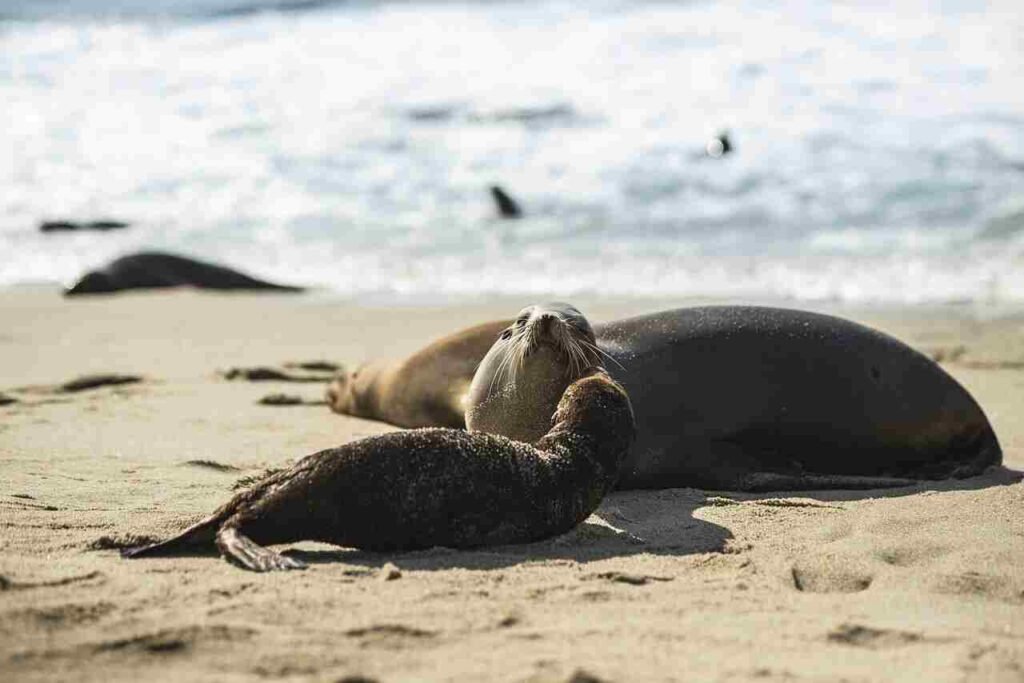
Sea mammals are animals that live in the ocean and are warm-blooded, just like humans. They breathe air and usually give birth to live babies. These animals need to come up to the surface of the water to breathe. Some sea mammals are very large, like the blue whale, while others are smaller, like dolphins. They are a very important part of ocean life.
In this list, you will find some common sea mammal names along with their scientific names and how long they live. These animals include whales, dolphins, seals, and sea otters. Each of them has special qualities that help them live in the water.
| Sea Mammal Name | Scientific Name | Lifespan |
|---|---|---|
| Amazon River Dolphin | Inia geoffrensis | 20-30 years |
| Arctic Beluga Whale | Delphinapterus leucas | 35-50 years |
| Atlantic Spotted Dolphin | Stenella frontalis | 20-30 years |
| Baird’s Beaked Whale | Berardius bairdii | 40-50 years |
| Beluga Whale | Delphinapterus leucas | 35-50 years |
| Blue Whale | Balaenoptera musculus | 70-90 years |
| Bowhead Whale | Balaena mysticetus | 200+ years |
| California Sea Lion | Zalophus californianus | 15-25 years |
| Common Dolphin | Delphinus delphis | 20-25 years |
| Cuvier’s Beaked Whale | Ziphius cavirostris | 60-70 years |
| Dolphin | Delphinidae | 20-60 years |
| Dugong | Dugong dugon | 70 years |
| Dusky Dolphin | Lagenorhynchus obscurus | 25-30 years |
| Elephant Seal | Mirounga | 20-25 years |
| Fin Whale | Balaenoptera physalus | 80-90 years |
| Fraser’s Dolphin | Lagenodelphis hosei | 25-35 years |
| Gray Whale | Eschrichtius robustus | 50-70 years |
| Greenland Whale | Balaena mysticetus | 200+ years |
| Guiana Dolphin | Sotalia guianensis | 20-30 years |
| Harbor Porpoise | Phocoena phocoena | 10-15 years |
| Harbor Seal | Phoca vitulina | 20-30 years |
| Humpback Whale | Megaptera novaeangliae | 45-50 years |
| Killer Whale | Orcinus orca | 50-80 years |
| Manatee | Trichechus | 40-60 years |
| Minke Whale | Balaenoptera acutorostrata | 50-60 years |
| Musk Ox | Ovibos moschatus | 12-20 years |
| Narwhal | Monodon monoceros | 30-40 years |
| Northern Fur Seal | Callorhinus ursinus | 18-20 years |
| Orca (Killer Whale) | Orcinus orca | 50-80 years |
| Pacific Ocean Manatee | Trichechus manatus | 40-60 years |
| Pacific White-Sided Dolphin | Lagenorhynchus obliquidens | 25-35 years |
| Pilot Whale | Globicephala | 45-60 years |
| Pygmy Killer Whale | Feresa attenuata | 20-25 years |
| Pygmy Sperm Whale | Kogia breviceps | 30 years |
| Risso’s Dolphin | Grampus griseus | 40-50 years |
| River Dolphin | Platanista gangetica | 20-30 years |
| Sperm Whale | Physeter macrocephalus | 60-70 years |
| Southern Right Whale | Eubalaena australis | 50-70 years |
| Spotted Seal | Phoca largha | 30-35 years |
| Steller Sea Lion | Eumetopias jubatus | 30 years |
| Tursiops truncatus | Tursiops truncatus | 40-60 years |
| Vaquita | Phocoena sinus | 6-7 years |
| Walrus | Odobenus rosmarus | 40 years |
| White-Beaked Dolphin | Lagenorhynchus albirostris | 20-25 years |
Sea Reptiles Names
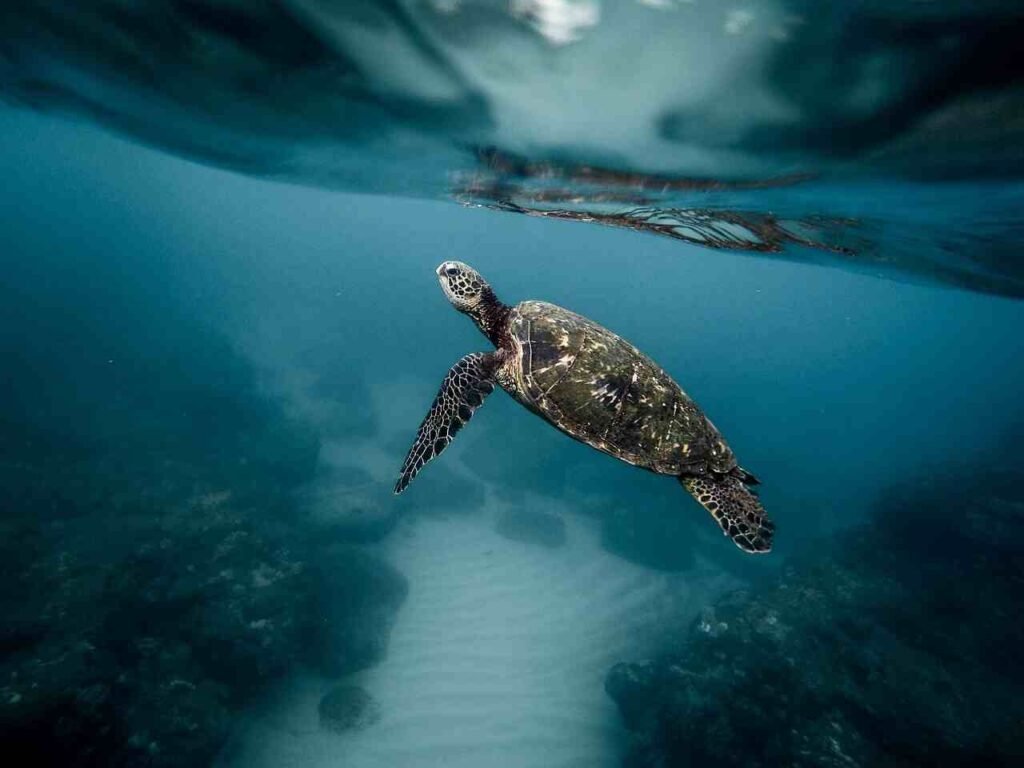
Sea reptiles are animals that live in the ocean, but unlike mammals, they are cold-blooded. They breathe air and usually lay eggs. These reptiles have adapted to life in the sea in different ways. Some, like sea turtles, spend most of their time in the ocean, while others, like sea snakes, are fully adapted to life underwater.
In this list, you will find some common sea reptiles names along with their scientific names. These animals are an important part of the ocean ecosystem and have unique features that help them survive in the water.
- Aldabra Giant Tortoise (Aldabrachelys gigantea)
- Alligator Snapping Turtle (Macrochelys temminckii)
- Arrau Turtle (Podocnemis expansa)
- Australian Snapping Turtle (Elseya dentata)
- Banded Sea Krait (Laticauda colubrina)
- Black Sea Turtle (Chelonia agassizii)
- Blue-Lipped Sea Krait (Laticauda laticaudata)
- California Sea Snake (Hydrophis calderoni)
- Chesapeake Bay Sea Turtle (Chelonia mydas & Caretta caretta)
- Common Snapping Turtle (Chelydra serpentina)
- Crocodile Monitor (Varanus salvadori)
- Crocodile (Crocodylus genus)
- Dumeril’s Boa (Acrantophis dumerili)
- Eastern Box Turtle (Terrapene carolina)
- European Pond Turtle (Emys orbicularis)
- Flatback Sea Turtle (Natator depressus)
- Forest Tortoise (Manouria emys)
- Galápagos Tortoise (Chelonoidis nigra)
- Giant Galápagos Tortoise (Chelonoidis nigra)
- Greek Tortoise (Testudo graeca)
- Green Sea Turtle (Chelonia mydas)
- Hawksbill Turtle (Eretmochelys imbricata)
- Hermann’s Tortoise (Testudo hermanni)
- Indian Ocean Green Sea Turtle (Chelonia mydas – Indian Ocean Population)
- Indian Star Tortoise (Geochelone elegans)
- Kemp’s Ridley Turtle (Lepidochelys kempii)
- Leatherback Sea Turtle (Dermochelys coriacea)
- Leopard Tortoise (Stigmochelys pardalis)
- Loggerhead Turtle (Caretta caretta)
- Marine Iguana (Amblyrhynchus cristatus)
- Nile Crocodile (Crocodylus niloticus)
- Olive Ridley Turtle (Lepidochelys olivacea)
- Pacific Sea Snake (Hydrophis viperinus)
- Pancake Tortoise (Malacochersus tornieri)
- Painted Turtle (Chrysemys picta)
- Pond Turtle (Clemmys guttata)
- Red-Eared Slider (Trachemys scripta elegans)
- Radiated Tortoise (Astrochelys radiata)
- Saltwater Crocodile (Crocodylus porosus)
- Spiny Softshell Turtle (Apalone spinifera)
- Southern Painted Turtle (Chrysemys dorsalis)
- Spur-Thighed Tortoise (Testudo graeca)
- Tuatara (Sphenodon punctatus)
- Tortoise (Testudo genus)
- Western Pond Turtle (Actinemys marmorata)
- Western Painted Turtle (Chrysemys picta bellii)
- Yellow-Bellied Sea Snake (Pelamis platura)
sea birds names
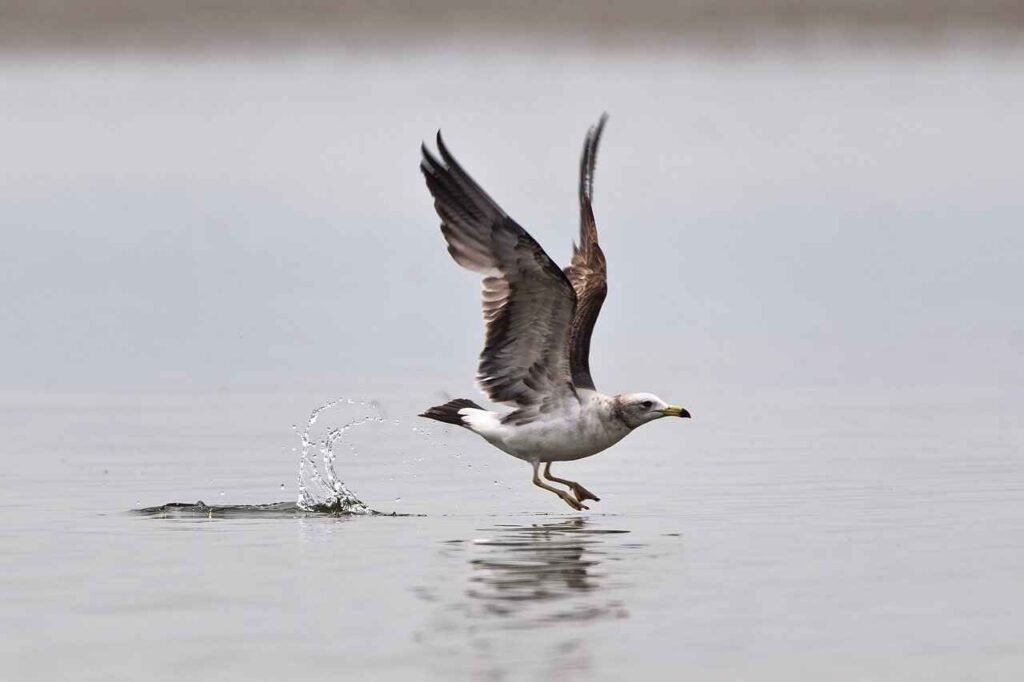
Sea birds are incredible creatures that spend most of their lives near or on the ocean. They have special adaptations that allow them to thrive in the salty, windy environment. These birds are skilled fliers and some are great divers, able to catch fish right from the water. They come in many shapes and sizes, from the large albatross to the small puffin.
In this section, you will find a list of popular sea birds, their scientific names, and how long they live. These birds play a crucial role in the health of the oceans and are often seen soaring above the waves or resting along the shore.
| Sea Birds Names | Scientific Name | Lifespan |
|---|---|---|
| Albatross | Diomedea | 50-60 years |
| American Oystercatcher | Haematopus palliatus | 10-20 years |
| Atlantic Puffin | Fratercula arctica | 20-30 years |
| Aurora Albatross | Phoebastria irrorata | 40 years |
| Australian Pelican | Pelecanus conspicillatus | 10-25 years |
| Avocet | Recurvirostra avosetta | 12 years |
| Bald Eagle | Haliaeetus leucocephalus | 20-30 years |
| Barnacle Goose | Branta leucopsis | 10-15 years |
| Bering Sea Shearwater | Puffinus griseus | 10 years |
| Black Skimmer | Rynchops niger | 12-15 years |
| Black-browed Albatross | Thalassarche melanophris | 50-60 years |
| Black-headed Gull | Chroicocephalus ridibundus | 15-20 years |
| Bristle-thighed Curlew | Numenius tahitiensis | 10-20 years |
| Brown Booby | Sula leucogaster | 20-25 years |
| Brown Pelican | Pelecanus occidentalis | 15-25 years |
| California Gull | Larus californicus | 15-20 years |
| Cape Petrel | Daption capense | 25-30 years |
| Caspian Tern | Hydroprogne caspia | 20 years |
| Common Eider | Somateria mollissima | 15-20 years |
| Common Tern | Sterna hirundo | 15 years |
| Crested Auklet | Aethia cristatella | 10 years |
| Crested Tern | Sterna bergii | 20 years |
| Great Black-backed Gull | Larus marinus | 15-20 years |
| Great Cormorant | Phalacrocorax carbo | 10-15 years |
| Grey-headed Albatross | Thalassarche chrysostoma | 30-40 years |
| Gull-billed Tern | Gelochelidon nilotica | 15-20 years |
| Herring Gull | Larus argentatus | 10-20 years |
| Horned Puffin | Fratercula corniculata | 15-20 years |
| Jacana | Jacanidae | 10 years |
| Kittiwake | Rissa tridactyla | 10-15 years |
| Laysan Albatross | Phoebastria immutabilis | 60 years |
| Leach’s Storm-petrel | Oceanodroma leucorhoa | 10-15 years |
| Little Auk | Alle alle | 5-10 years |
| Long-tailed Duck | Clangula hyemalis | 12-15 years |
| Louisiana Heron | Egretta tricolor | 10-15 years |
| Magnificent Frigatebird | Fregata magnificens | 30-40 years |
| Manx Shearwater | Puffinus puffinus | 30 years |
| Masked Booby | Sula dactylatra | 20-25 years |
| Mottled Petrel | Pterodroma inexpectata | 25-30 years |
| Northern Fulmar | Fulmarus glacialis | 30-40 years |
| Osprey | Pandion haliaetus | 15-25 years |
| Pacific Loon | Gavia pacifica | 15-20 years |
| Pale-vented Pigeon | Patagioenas cayennensis | 20 years |
| Pelagic Cormorant | Phalacrocorax pelagicus | 10-15 years |
| Piping Plover | Charadrius melodus | 5-10 years |
| Red-billed Tropicbird | Phaethon aethereus | 15-20 years |
| Royal Tern | Thalasseus maximus | 20-25 years |
| Sabine’s Gull | Xema sabini | 12-15 years |
| Seagull | Larus | 10-20 years |
| Snowy Egret | Egretta thula | 15 years |
| Sooty Tern | Onychoprion fuscatus | 15-25 years |
| Wilson’s Storm-petrel | Oceanites oceanicus | 5-7 years |
| Yellow-eyed Penguin | Megadyptes antipodes | 10-12 years |
sea Invertebrates (Cnidarians)
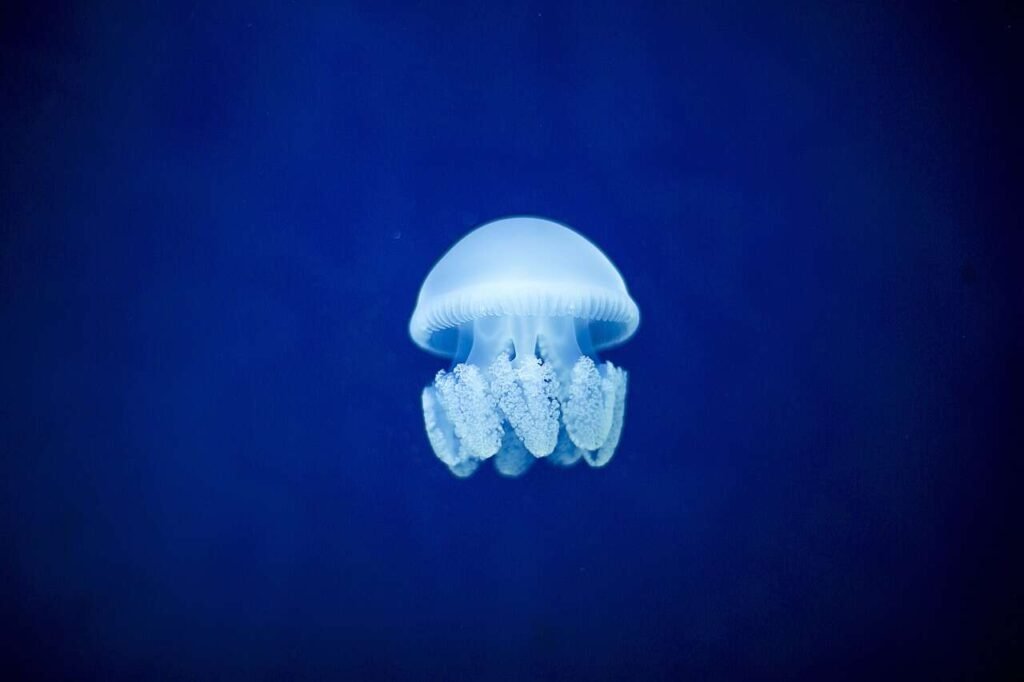
In this part, you will learn about some common cnidarians, their scientific names, and their lifespan. Even though cnidarians have a simple structure, they are very important in the ocean. They help support many other sea animals by offering food and shelter.
- Anemone (Sea Anemone) (Actiniaria)
- Arctic Sea Nettle (Chrysaora melanaster)
- Bell Jellyfish (Rhizostoma pulmo)
- Box Jellyfish (Chironex fleckeri)
- By-the-wind Sailor (Velella velella)
- Cauliflower Coral (Pocillopora meandrina)
- Caribbean Sea Anemone (Condylactis gigantea)
- Chain of Seas (Stomolophus meleagris)
- Clown Anemonefish (Amphiprion ocellaris)
- Colonial Sea Fan (Eunicella singularis)
- Coral (Anthozoa)
- Crowned Jellyfish (Cephea cephea)
- Curled Sea Anemone (Aiptasia mutabilis)
- Deer Antler Coral (Erythropodium caribaeorum)
- Deep-sea Jellyfish (Periphylla periphylla)
- Disc Anemone (Heteractis crispa)
- Dotted Jellyfish (Aurelia aurita)
- Duchess Sea Anemone (Anthopleura elegantissima)
- Elephant Ear Sponge (Agelas clathrodes)
- Fire Coral (Millepora spp.)
- Flower Coral (Echinopora lamellosa)
- Giant Clams (Tridacna gigas)
- Giant Jellyfish (Nemopilema nomurai)
- Glass Sponge (Euplectella aspergillum)
- Golden Jellyfish (Mastigias papua)
- Hagfish (Myxine glutinosa)
- Hydra (Hydra vulgaris)
- Lion’s Mane Jellyfish (Cyanea capillata)
- Long-tentacle Anemone (Macrodactyla doreensis)
- Mushroom Coral (Fungia spp.)
- Moon Jellyfish (Aurelia aurita)
- Moorish Idol (Zanclus cornutus)
- Peach Coral (Astroides calycularis)
- Portuguese Man o’ War (Physalia physalis)
- Purple Sea Urchin (Strongylocentrotus purpuratus)
- Red Coral (Corallium rubrum)
- Sea Fan (Gorgonia flabellum)
- Sea Pens (Pennatulacea)
- Sea Spider (Pycnogonida)
- Sea Whip (Leptogorgia virgulata)
- Shining Jellyfish (Aequorea victoria)
- Soft Coral (Alcyonacea)
- Spaghetti Worms (Sabella spp.)
- Spiny Lobster (Panulirus argus)
- Stone Coral (Porites spp.)
- Stony Coral (Scleractinia)
- Sunflower Star (Pycnopodia helianthoides)
- Tubeworms (Sabellidae)
- Upside-down Jellyfish (Cassiopea spp.)
- Vase Sponge (Callyspongia spp.)
- Warty Sea Cucumber (Parastichopus californicus)
- Worm Coral (Ancorina spp.)
Sea Invertebrates (Mollusks)
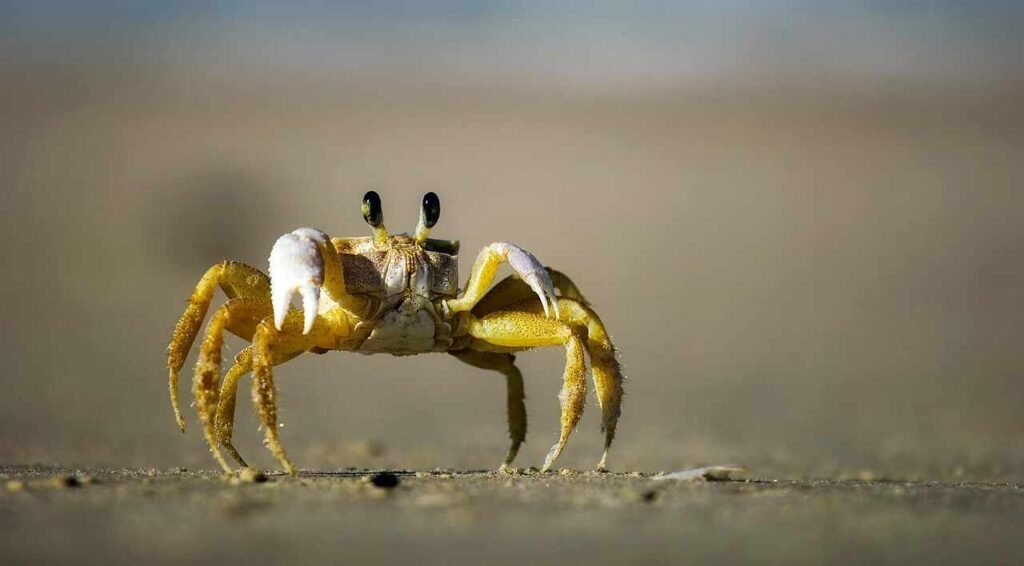
Mollusks are a group of sea animals that do not have a backbone. They come in many different shapes and sizes, and they can be found in oceans all over the world. Some mollusks, like snails and clams, have hard shells that protect them, while others, like octopuses and squids, have soft bodies.
In this section, you will find a list of common sea mollusks, their scientific names. Mollusks play an important role in marine life, helping to clean the ocean floor and serving as food for other animals.
- Abalone (Haliotis spp.)
- African Clawed Frog (Xenopus laevis)
- Asian Clam (Corbicula fluminea)
- Atlantic Bay Scallop (Argopecten irradians)
- Atlantic Razor Clam (Ensis directus)
- Banana Slug (Ariolimax dolichophallus)
- Bay Scallop (Argopecten irradians)
- Black-lip Pearl Oyster (Pinctada margaritifera)
- Blue Mussel (Mytilus edulis)
- Brittle Star (Ophiuroidea spp.)
- Brown Garden Snail (Cornu aspersum)
- Bumblebee Snail (Coryphella spp.)
- Channeled Whelk (Busycotypus canaliculatus)
- Chiton (Polyplacophora spp.)
- Coconut Crab (Birgus latro)
- Cone Snail (Conus spp.)
- Cowrie (Cypraea spp.)
- Cuttlefish (Sepia spp.)
- Dragonet (Callionymidae spp.)
- Dungeness Crab (Metacarcinus magister)
- Eel (Anguilliformes spp.)
- File Clam (Lima spp.)
- Flame Scallop (Cortezidae spp.)
- Geoduck (Panopea generosa)
- Giant Clam (Tridacna gigas)
- Giant Pacific Octopus (Enteroctopus dofleini)
- Giant Squid (Architeuthis dux)
- Grapsid Crab (Grapsus spp.)
- Green-lipped Mussel (Perna canaliculus)
- Hard Clam (Mercenaria mercenaria)
- Harlequin Tusk Fish (Choerodon fasciatus)
- Horseshoe Crab (Limulidae spp.)
- Jackknife Clam (Ensis spp.)
- Killer Clam (Tridacna spp.)
- King Crab (Paralithodes camtschaticus)
- Kingdom of Mussels (Mytilus spp.)
- Limpet (Patellidae spp.)
- Mantis Shrimp (Stomatopoda spp.)
- Mollusk (Mollusca spp.)
- Murex Snail (Murex spp.)
- Octopus (Octopus spp.)
- Oyster (Ostreidae spp.)
- Peacock Mantis Shrimp (Odontodactylus scyllarus)
- Pearl Oyster (Pinctada spp.)
- Pillbug (Armadillidiidae spp.)
- Pinto Abalone (Haliotis kamtschatkana)
- Pearly Nautilus (Nautilus pompilius)
- Purple Sea Snail (Janthina janthina)
- Razor Clam (Solen spp.)
- Scallop (Pectinidae spp.)
- Sea Cucumber (Holothuroidea spp.)
- Sea Hare (Aplysia spp.)
- Sea Snail (Gastropoda spp.)
- Squid (Teuthida spp.)
Dea Invertebrates (Crustaceans)
In this list, you will discover some common sea crustaceans, their scientific names. Crustaceans may have a hard outer shell and multiple legs, but they are essential to life in the ocean. They provide food for many marine animals and help keep the ocean’s ecosystem healthy.
- Acorn Barnacle (Semibalanus balanoides)
- American Lobster (Homarus americanus)
- Anomura (Anomura spp.)
- Arctic Krill (Thysanoessa longicaudata)
- Asian Shore Crab (Hemigrapsus sanguineus)
- Atlantic Blue Crab (Callinectes sapidus)
- Australian Giant Crab (Pseudocarcinus gigas)
- Barred Tiger Prawn (Penaeus semisulcatus)
- Banded Coral Shrimp (Stenopus hispidus)
- Beach Hopper (Talitridae spp.)
- Brittle Star (Ophiuroidea spp.)
- Brown Shrimp (Crangon crangon)
- Caribbean Spiny Lobster (Panulirus argus)
- Cedar Point Shrimp (Palaemonetes spp.)
- Chinese Mitten Crab (Eriocheir sinensis)
- Common Crayfish (Astacus astacus)
- Common Lobster (Homarus gammarus)
- Crescenti Shrimp (Palaemonetes spp.)
- Cuttlefish Crab (Stomatopoda spp.)
- Dungeness Crab (Metacarcinus magister)
- Dwarf Shrimp (Caridina spp.)
- Emerald Crab (Mithraculus sculptus)
- Fiddler Crab (U. mjoebergi)
- Flatback Lobster (Ibacus australiensis)
- Flower Shrimp (Atyidae spp.)
- Ghost Shrimp (Callianassidae spp.)
- Giant Mud Crab (Scylla serrata)
- Giant River Prawn (Macrobrachium rosenbergii)
- Green Crab (Carcinus maenas)
- Greenland Shrimp (Pandalus borealis)
- Hairy Crab (Pilumnus hirtellus)
- Horseshoe Crab (Limulus polyphemus)
- Indian White Shrimp (Fenneropenaeus indicus)
- Isopod (Isopoda spp.)
- Japanese Spider Crab (Macrocheira kaempferi)
- Jellyfish Crab (Nephropidae spp.)
- King Crab (Paralithodes camtschaticus)
- Klepht Crab (Calappidae spp.)
- Lobster (Homarus spp.)
- Mantis Shrimp (Stomatopoda spp.)
- Mud Crab (Scylla spp.)
- Noble Shrimp (Palaemon spp.)
- Northern Krill (Meganyctiphanes norvegica)
- Pacific White Shrimp (Litopenaeus vannamei)
- Pistol Shrimp (Alpheidae spp.)
- Red Rock Crab (Cancer productus)
- Ribbed Mussel Crab (Chesapeakensis spp.)
- Sand Shrimp (Crangonidae spp.)
- Scorpionfish Crab (Scorpaenidae spp.)
- Snow Crab (Chionoecetes spp.)
- Spiny Lobster (Panulirus spp.)
- Spider Crab (Majoidea spp.)
- Spiny Water Flea (Bythotrephes longimanus)
- Squat Lobster (Galathea spp.)
- Tiger Prawn (Penaeus monodon)
- Woodlouse (Oniscus asellus)
- Yellowtail Scad Crab (Caranx melampygus)
sea Invertebrates (Echinoderms)
In this part, you will learn about some common echinoderms, their scientific names, and their lifespan. Echinoderms, like starfish, sea urchins, and sea cucumbers, have a unique feature: a hard, spiny outer surface. These animals may look different from others in the ocean, but they play an important role. Echinoderms help maintain the balance of the ocean by feeding on algae and detritus, and they provide food for other sea creatures.
| Sea Invertebrate Names | Scientific Name | Lifespan |
|---|---|---|
| Asterina Starfish | Asterina gibbosa | 5-10 years |
| Brittle Star | Ophiuroidea | 5-10 years |
| Cushion Star | Culcita novaeguineae | 10-15 years |
| Crinoid | Crinoidea | 10-15 years |
| Dahlia Sea Cucumber | Pachythyone dahlia | 5-10 years |
| Feather Star | Crinoidea | 10-15 years |
| Fire Urchin | Asthenosoma varium | 10-20 years |
| Green Sea Urchin | Strongylocentrotus droebachiensis | 10-20 years |
| Heart Urchin | Echinocardium cordatum | 10-15 years |
| Indian Sea Urchin | Tripneustes gratilla | 10-20 years |
| Large Red Sea Star | Asterias rubens | 10-35 years |
| Leather Sea Cucumber | Leptosynapta inhaerens | 5-10 years |
| Long-Spined Sea Urchin | Diadema antillarum | 10-30 years |
| Magnificent Sea Star | Linckia laevigata | 5-10 years |
| Marine Brittle Star | Ophiura ophiura | 5-10 years |
| Mojave Urchin | Centrostephanus coronatus | 10-15 years |
| Naked Sea Cucumber | Cucumaria frondosa | 5-10 years |
| Nodose Sea Cucumber | Holothuria nodosa | 5-10 years |
| Orange Sea Star | Gomophia obtusata | 5-10 years |
| Oyster Crinoid | Promachocrinus Kerguelensis | 15-25 years |
| Pacific Sea Urchin | Strongylocentrotus purpuratus | 10-30 years |
| Peach Sea Cucumber | Holothuria scabra | 5-10 years |
| Pineapple Sea Star | Pentaceraster mammillatus | 5-10 years |
| Pink Sea Cucumber | Holothuria edulis | 5-10 years |
| Purple Sea Urchin | Strongylocentrotus purpuratus | 10-20 years |
| Red Sea Urchin | Mesocentrotus franciscanus | 20-30 years |
| Sand Dollar | Clypeasteroida | 5-10 years |
| Sea Cucumber | Holothuroidea | 10-20 years |
| Sea Dandelion | Dendrocnide | 5-10 years |
| Sea Feather | Crinoidea | 15-20 years |
| Sea Lily | Crinoidea | 15-20 years |
| Sea Pig | Scotoplanes | 10-15 years |
| Sea Star | Asteroidea | 5-20 years |
| Sea Urchin | Echinoidea | 10-25 years |
| Shaggy Sea Cucumber | Pseudocnus | 5-10 years |
| Shingle Star | Astropecten articulatus | 5-10 years |
| Smooth Sea Urchin | Diadema setosum | 10-20 years |
| Southern Red Sea Urchin | Centrostephanus longispinus | 10-25 years |
| Spiny Sea Cucumber | Thelenota ananas | 15-25 years |
| Spiny Sea Star | Marthasterias glacialis | 15-25 years |
| Starfish | Asteroidea | 5-20 years |
| Starfish (Common) | Asterias rubens | 10-35 years |
| Stone Star | Luidia senegalensis | 10-20 years |
| Sunflower Sea Star | Pycnopodia helianthoides | 20-35 years |
| Thorny Sea Urchin | Diadema setosum | 10-20 years |
| Tropical Sea Urchin | Echinometra lucunter | 10-15 years |
| Turquoise Sea Star | Linckia laevigata | 5-10 years |
| Violet Sea Urchin | Echinoneus cyclostomus | 10-20 years |
| White Sea Urchin | Echinus esculentus | 10-30 years |
| Yellow Sea Cucumber | Holothuria fuscogilva | 15-25 years |
Sea Plankton Names
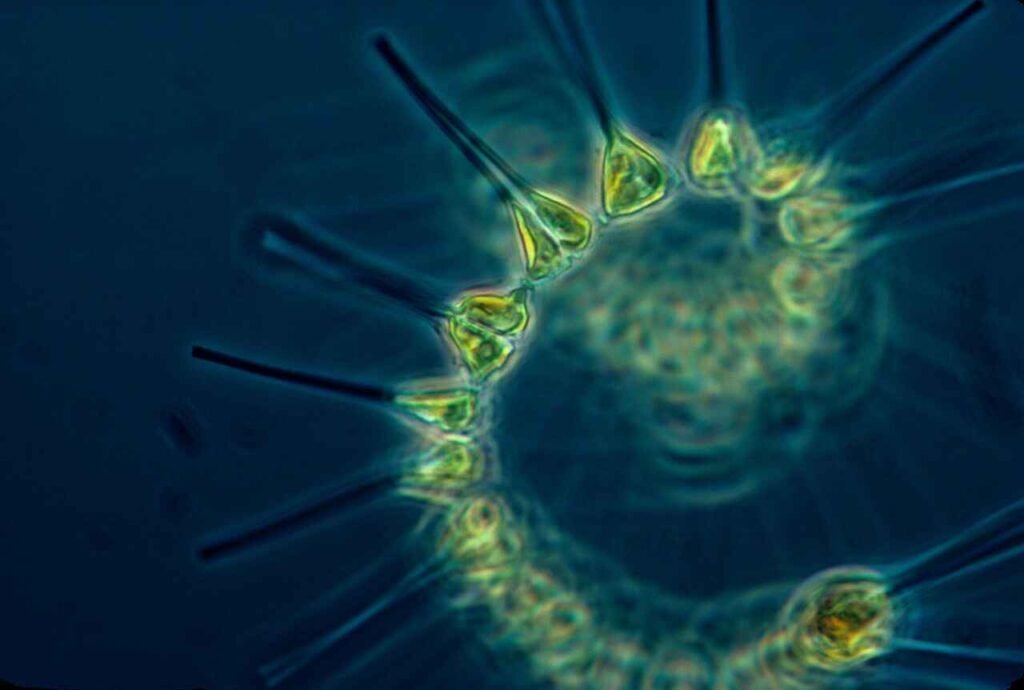
In this section, you will learn about some common types of sea plankton names, their scientific names, and their lifespan. Plankton are tiny sea creatures that drift in the water and cannot swim against the current. Despite their small size, they are very important in the ocean. They serve as food for many larger animals, like fish and whales, and help support the entire marine food chain.
| Sea Plankton Name | Scientific Name | Lifespan |
|---|---|---|
| Acartia | Acartia tonsa | Few days to weeks |
| Amphipod | Amphipoda | Few weeks |
| Anomalocaris | Anomalocaris canadensis | 6-9 months |
| Artemia | Artemia salina | Few weeks |
| Brachionus | Brachionus plicatilis | Few days to weeks |
| Chaetoceros | Chaetoceros | Few days to weeks |
| Ceratium | Ceratium hirundinella | Days to weeks |
| Chrysochromulina | Chrysochromulina sp. | Few days to weeks |
| Cladocera | Cladocera | Few weeks |
| Coscinodiscus | Coscinodiscus | Few weeks to months |
| Cyclops | Cyclops vicinus | Few weeks |
| Diatoms | Bacillariophyceae | Days to months |
| Dinophysis | Dinophysis acuminata | Few days to weeks |
| Dinoflagellates | Gymnodinium spp. | Days to weeks |
| Doliolida | Doliolida | Few weeks |
| Euglena | Euglena gracilis | Few days to weeks |
| Foraminifera | Foraminifera | Few months |
| Fucus | Fucus vesiculosus | Few weeks to months |
| Gonyaulax | Gonyaulax spp. | Few days to weeks |
| Grammatophora | Grammatophora marina | Few days to weeks |
| Heliozoa | Heliozoa | Few weeks to months |
| Holoplankton | Holoplankton | Lifelong (as plankton) |
| Hydrozoa | Hydrozoa | Few days to weeks |
| Kleptoplastida | Kleptoplastida | Few weeks |
| Kocuria | Kocuria sp. | Few days to weeks |
| Kryptoperidinium | Kryptoperidinium foliaceum | Few days to weeks |
| Lepidodinium | Lepidodinium viride | Few days to weeks |
| Littorina | Littorina littorea | Few weeks to months |
| Mysidacea | Mysidacea | Few weeks |
| Noctiluca | Noctiluca scintillans | Few days to weeks |
| Oithona | Oithona spp. | Few weeks |
| Oyster larvae | Ostreidae | Few days to weeks |
| Phaeocystis | Phaeocystis globosa | Few days to weeks |
| Phytoplankton | Various species | Days to months |
| Planctomycetes | Planctomycetes | Few days to weeks |
| Pteropods | Pteropoda | Few weeks |
| Radiolaria | Radiolaria | Few weeks to months |
| Sargassum | Sargassum spp. | Few weeks to months |
| Scyphozoa | Scyphozoa | Few days to weeks |
| Sea Urchin larvae | Echinodermata | Few days to weeks |
| Siphonophores | Siphonophora | Few weeks |
| Tintinnida | Tintinnida | Few days to weeks |
| Vorticella | Vorticella | Few days to weeks |
| Zooplankton | Zooplankton | Few weeks |
Marine Amphibians (Rare sea animal names)
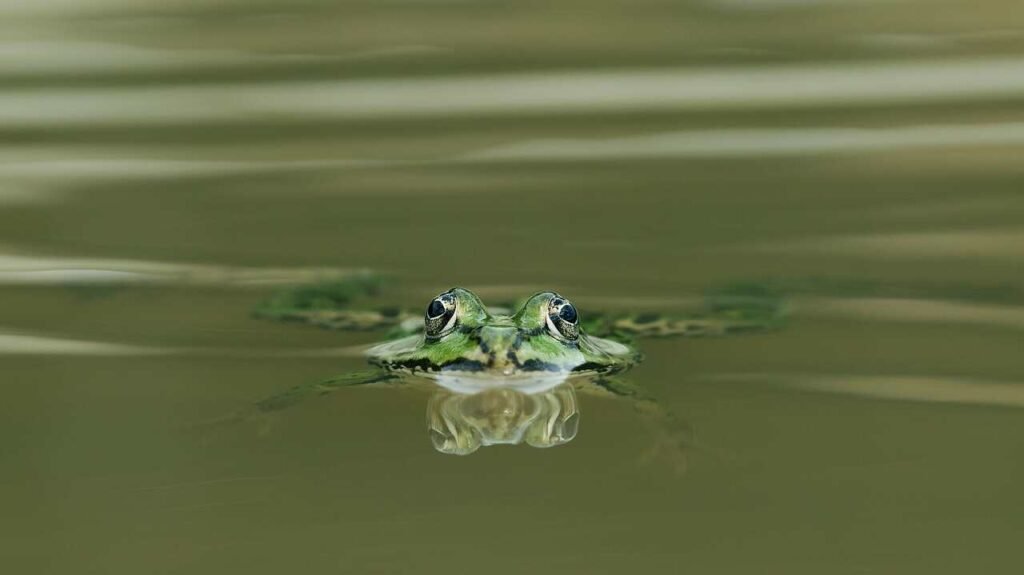
This section will introduce you to some rare marine amphibians, their scientific names, and what makes them special. Marine amphibians are unique because they can live in both water and on land. Though they are not as commonly seen as other ocean animals.
| Marine Amphibian Names | Scientific Name | Lifespan |
|---|---|---|
| Axolotl | Ambystoma mexicanum | 10-15 years |
| Barred Tiger Salamander | Ambystoma mavortium | 10-16 years |
| California Newt | Taricha torosa | 10-15 years |
| Chinese Giant Salamander | Andrias davidianus | 50-60 years |
| Clawed Frog | Xenopus laevis | 10-15 years |
| Common Frog | Rana temporaria | 5-10 years |
| Eastern Hellbender | Cryptobranchus alleganiensis alleganiensis | 25-30 years |
| Fire-bellied Newt | Cynops orientalis | 10-15 years |
| Giant Salamander | Andrias japonicus | 50 years |
| Giant River Otter | Pteronura brasiliensis | 10-12 years |
| Greenshield Frog | Rana sp. | 5-10 years |
| Japanese Fire-bellied Newt | Cynops pyrrhogaster | 15-20 years |
| Japanese Giant Salamander | Andrias japonicus | 50 years |
| Japanese Tree Frog | Hyla japonica | 5-7 years |
| Lesser Siren | Siren intermedia | 10-20 years |
| Marbled Salamander | Ambystoma opacum | 10-20 years |
| Mudpuppy | Necturus maculosus | 10-20 years |
| Mountain Dusky Salamander | Desmognathus ochrophaeus | 5-10 years |
| North American Mudpuppy | Necturus maculosus | 10-20 years |
| Red-eyed Tree Frog | Agalychnis callidryas | 5-10 years |
| Red-spotted Newt | Notophthalmus viridescens | 6-12 years |
| Russian Brown Frog | Rana temporaria | 5-10 years |
| Smallmouth Salamander | Ambystoma texanum | 10-15 years |
| Southern Leopard Frog | Rana sphenocephala | 6-8 years |
| Spotted Salamander | Ambystoma maculatum | 12-15 years |
| Surinam Toad | Pipa pipa | 10-15 years |
| Tailed Frog | Ascaphus truei | 7-10 years |
| Tiger Salamander | Ambystoma tigrinum | 10-16 years |
| Tree Frog | Hyla spp. | 5-10 years |
| Western Tiger Salamander | Ambystoma mavortium | 10-16 years |
| Wood Frog | Lithobates sylvaticus | 3-5 years |
| Yellow-bellied Toad | Bombina orientalis | 10-15 years |
| Yellow-spotted Salamander | Ambystoma maculatum | 12-15 years |
| Yellow-striped Frog | Rana palustris | 5-8 years |
| Western Green Tree Frog | Hyla japonica | 5-7 years |
| Eastern Tree Frog | Hyla orientalis | 5-10 years |
| European Fire-bellied Newt | Cynops pyrrhogaster | 10-15 years |
| American Green Tree Frog | Hyla cinerea | 5-10 years |
| American Bullfrog | Lithobates catesbeianus | 5-10 years |
| Asian Toad | Bufo gargarizans | 10-15 years |
| Asian Salamander | Hynobius retardatus | 15-20 years |
| Mexican Axolotl | Ambystoma mexicanum | 10-15 years |
| Mole Salamander | Ambystoma talpoideum | 10-15 years |
| Oriental Fire-bellied Newt | Cynops orientalis | 10-15 years |
| Northern Leopard Frog | Lithobates pipiens | 5-8 years |
| Red-legged Frog | Rana aurora | 6-10 years |
| Smooth Newt | Lissotriton vulgaris | 10-15 years |
| Spotted Newt | Notophthalmus viridescens | 6-12 years |
| Western Chorus Frog | Pseudacris triseriata | 4-6 years |
| Northern Red-legged Frog | Rana aurora | 6-10 years |
Popular Sea Animal Names in Different Cultures
Sea animals have different names and meanings in various cultures around the world. These animals are often seen as symbols, and their names carry important cultural significance.
For example, killer whales are commonly known as Orcas, but they are also called the wolves of the sea because of their clever hunting techniques and ability to work in groups, much like wolves on land. In some cultures, they are seen as powerful and intelligent animals.
In Hawaiian culture, the Honu is the name for sea turtles. These turtles are highly respected and represent wisdom, endurance, and long life. They are often seen as symbols of protection and a connection to the earth and the ocean.
Different cultures may have their own unique sea animal names and stories for sea animals, showing how deeply connected people are to the sea and the creatures that live in it. These sea animal names and meanings can help us understand how important sea animals are in the lives of many communities around the world.
frequently asked questions
Why do sea animals have names?
Sea animals have names to help us identify them and understand their characteristics. These names also allow scientists and people to communicate clearly about different species.
How are sea animal names given?
Sea animal names are usually given by scientists and can be based on the animal’s appearance, habitat, or the person who discovered them. Often, their names are in Latin or Greek.
What are some common names of sea animals?
Some common sea animal names include dolphins, sharks, whales, jellyfish, starfish, and sea turtles. These animals are often easy to recognize because of their unique features.
Are sea animal names the same all over the world?
Sea animal names can vary in different languages and cultures. However, scientific names, often in Latin, are used universally by scientists to avoid confusion.
What is the importance of knowing sea animal names?
Knowing the names of sea animals helps us learn more about them and their role in the ecosystem. It also helps in conservation efforts, so we can protect endangered species.
Do sea animals have more than one name?
Yes, some sea animals have common names and scientific names. For example, the killer whale is also called Orcinus orca in scientific terms.
What is the benefit of learning sea animal names?
Learning sea animal names helps us appreciate the diversity of ocean life, understand how animals contribute to ecosystems, and support efforts to protect them, especially endangered species.
conclusion
Learning about sea animal names is important because it helps us understand the many different creatures living in the ocean. Each sea animal has its own unique name that tells us something about its appearance, behavior, or where it lives. Knowing these names not only makes us more aware of the ocean’s diversity, but it also helps us protect these amazing animals. Whether you are a student, a nature lover, or simply curious about the sea, knowing the names of sea animals helps you appreciate the wonders of the ocean even more.

